LA’s past and future are tied to land – as in land development, land value, and landmarks. In other cities, the grid dictates urban growth and buildings conform to its strict order. In LA the land rules: street grids buckle and dissolve along the foothills, and structures and open spaces follow the principles of grading. Mountains, valleys, and water determine the shape of urban districts and the path of roads and freeways.
Framing the Problem - Los Angeles 2050
Los Angeles’s iconic hills are home to some of the deadliest wildfires. Insurance is no longer available, and most people must move. Third Mountain responds to high land value, and the highest risk of wildfires and economic loss, by regrading the hills to stunt the spread of fire.
Project Team: Xue Zhao, XinranGe, Chinmayi Suri
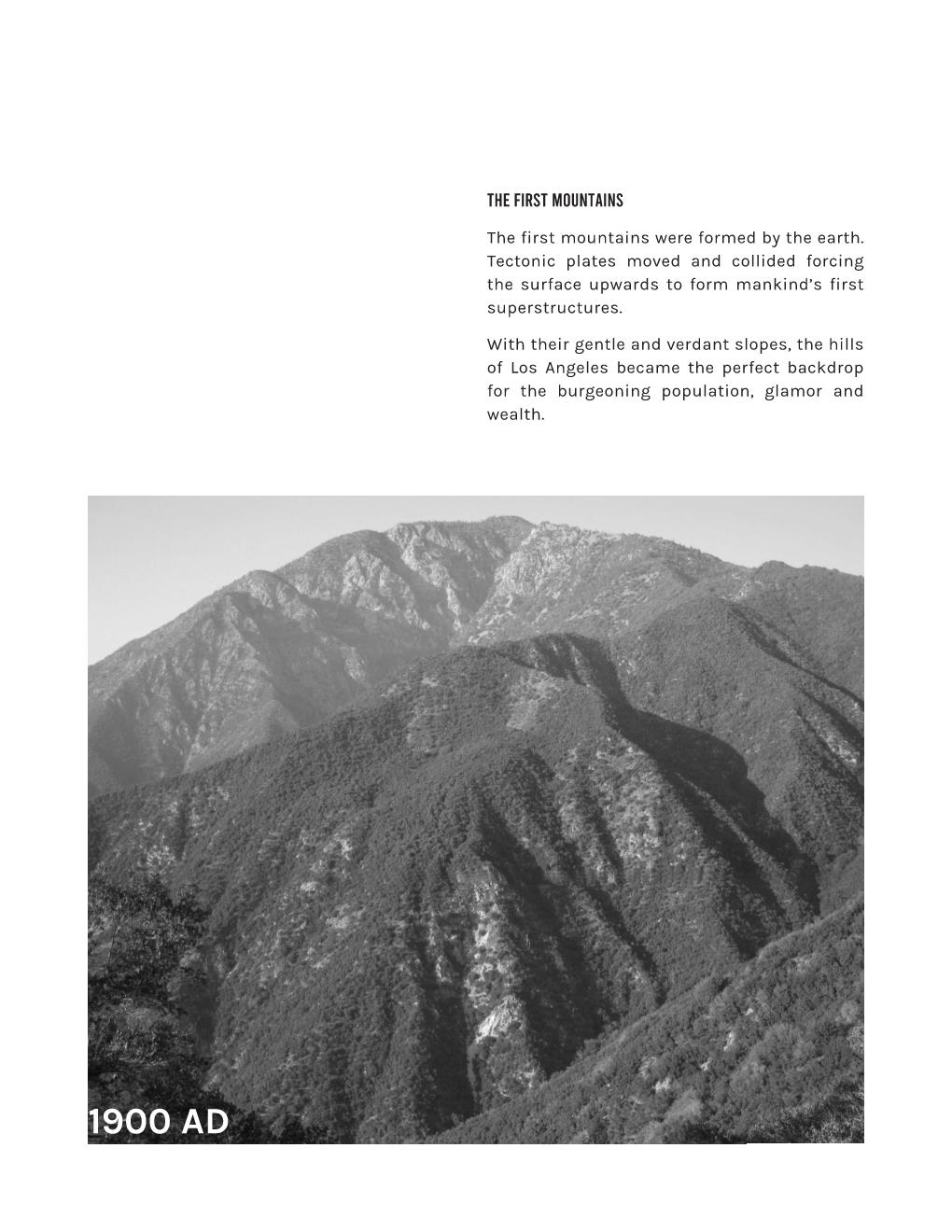
The first mountain

The second mountain
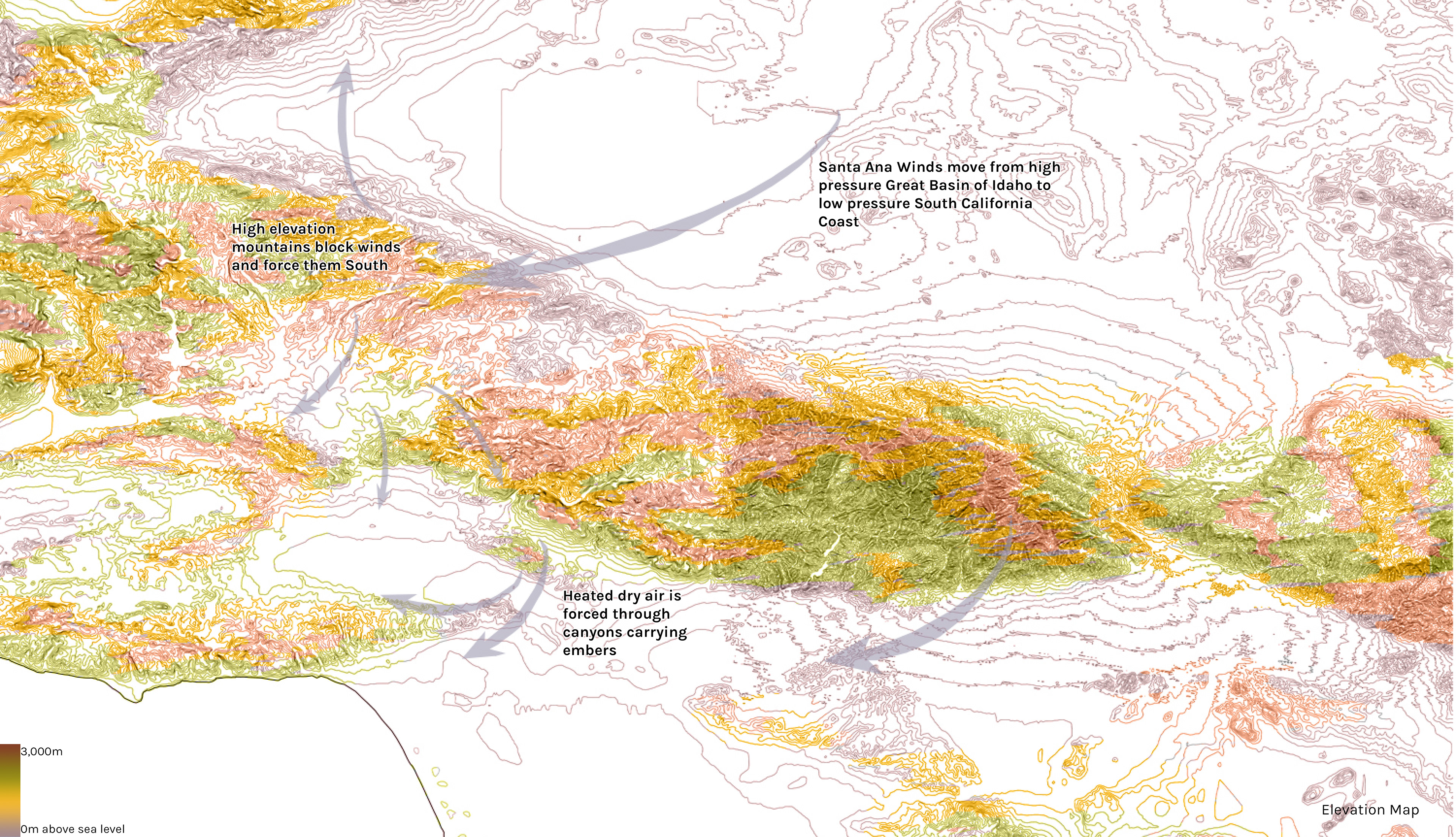
Elevation map

Slope map
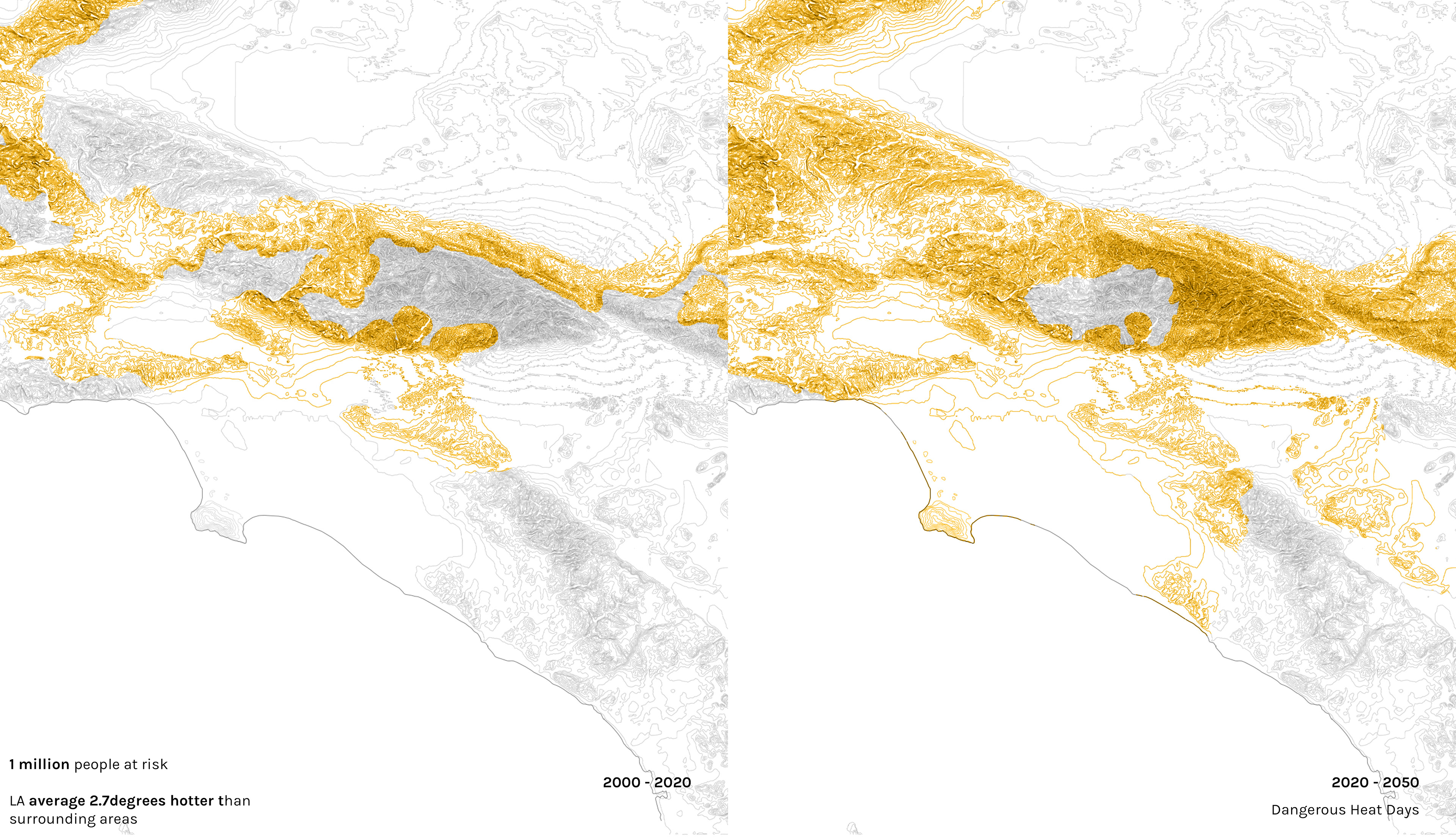
Areas of high dangerous heat days
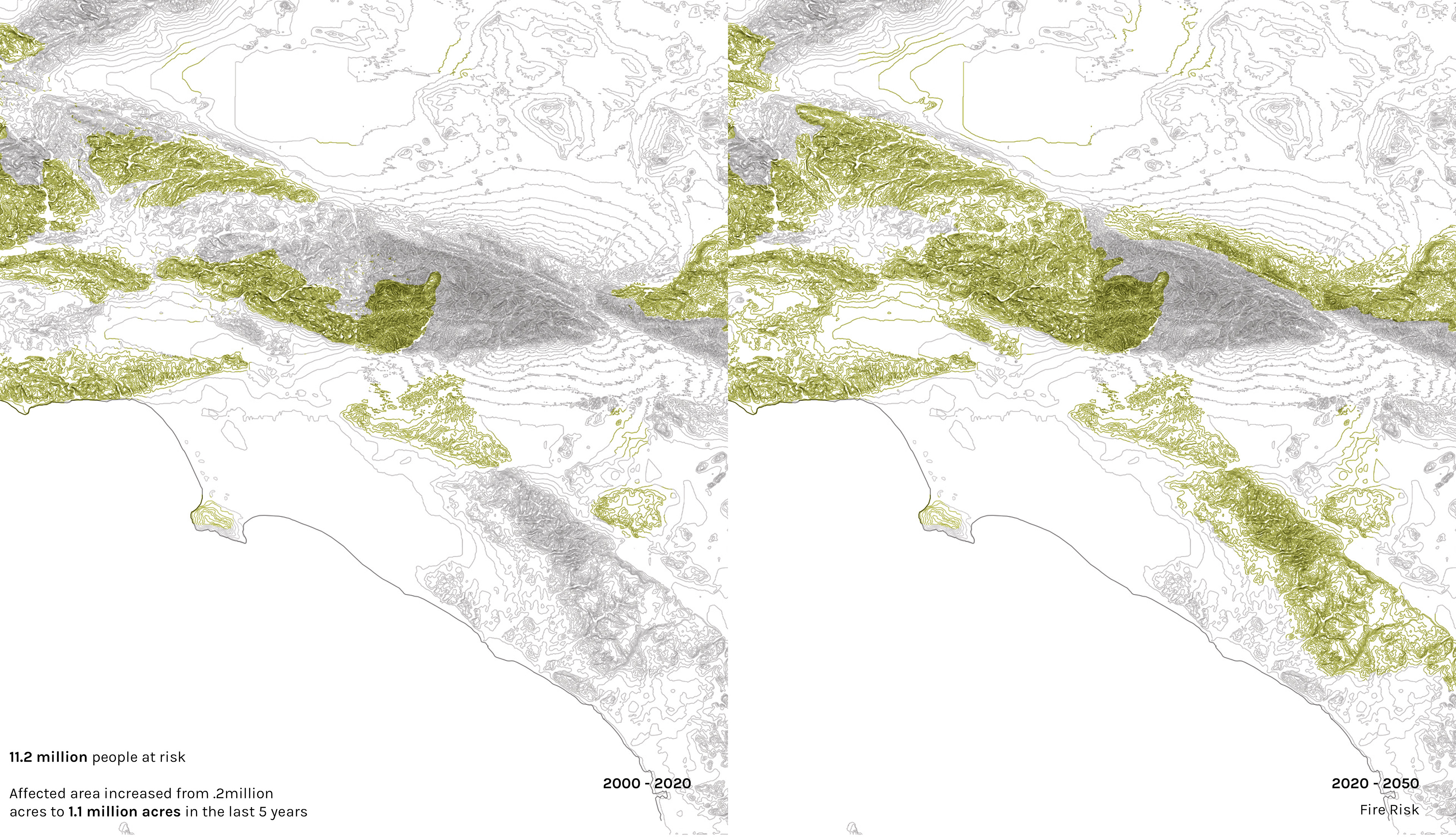
Areas of high fire risk

Areas of high residential and economic risk
Research shows that the spread of these wildfires is a result of the topography of the LA mountains. Topography is the most stable variable in fire behavior. Slope, aspect, elevation, and topographic features influence fire spread. Landforms can influence incoming solar radiation (slope, aspect, elevation), fuel moisture, local wind patterns, and orographic lifting of air masses, and certain landforms attract lightning ignition. Man-made alterations to the surface by construction have served to aggravate the spread of fire.
Elevation affects fire behavior by influencing the amount and timing of precipitation, exposure to prevailing wind, and seasonal drying of fuel. In lower elevations (where most private land is located), fuels tend to dry out earlier in the year because of higher temperatures and lower precipitation. Warm Santa Ana winds carry embers from the base of slopes upwards spreading them. These winds that move from high-pressure zones to low-pressure result in the uncontrollable and catastrophic destruction recently seen.
Hillside slopes are directly proportional to the intensity of the spread of fire. With steeper slopes, the wind carrying embers travels faster resulting in swifter and deadlier fires. Slopes greater than 20 degrees are conducive to the spread of fire. Most of the hillsides in Los Angeles have a 30% slope which is the primary cause of the calamitous fires.
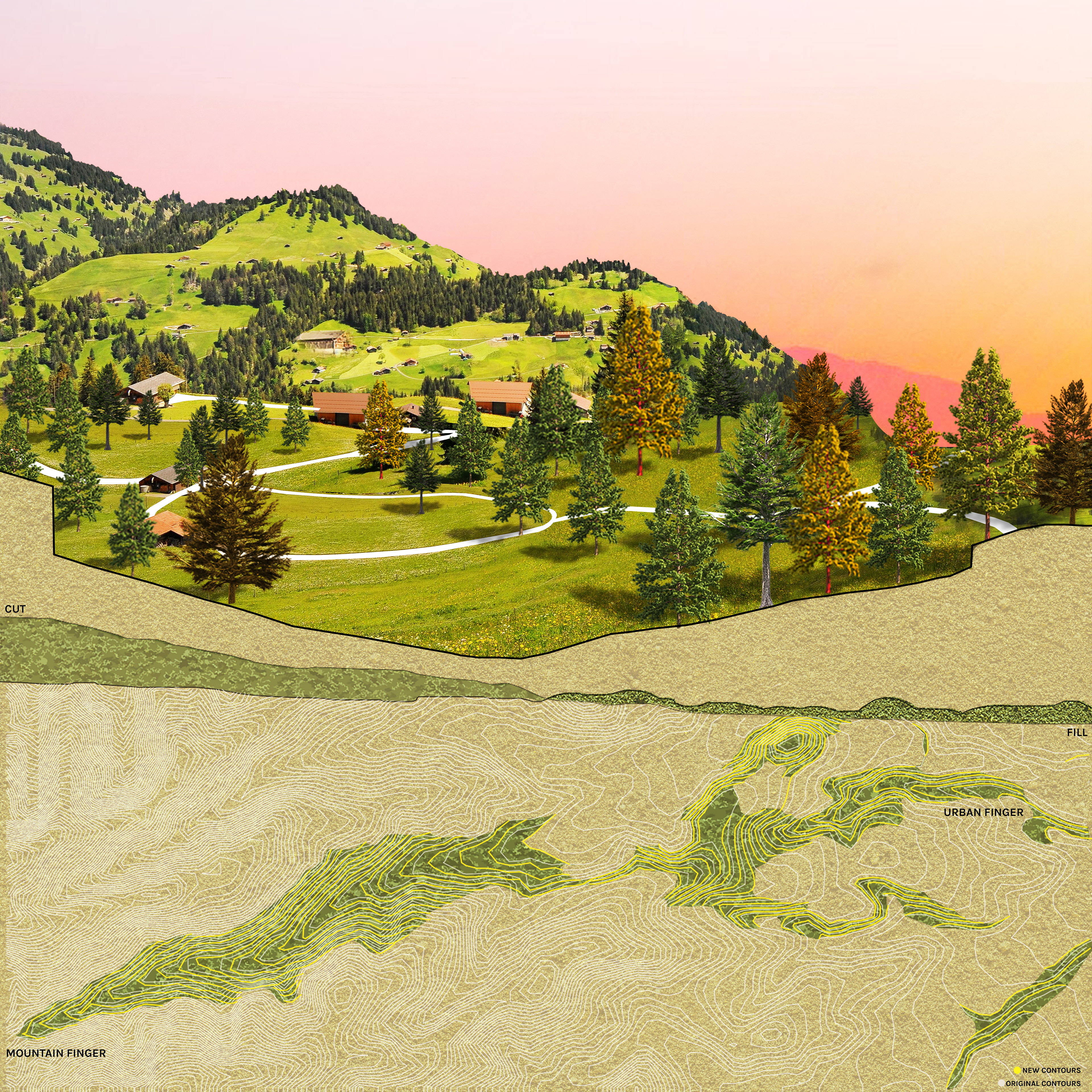
New contours
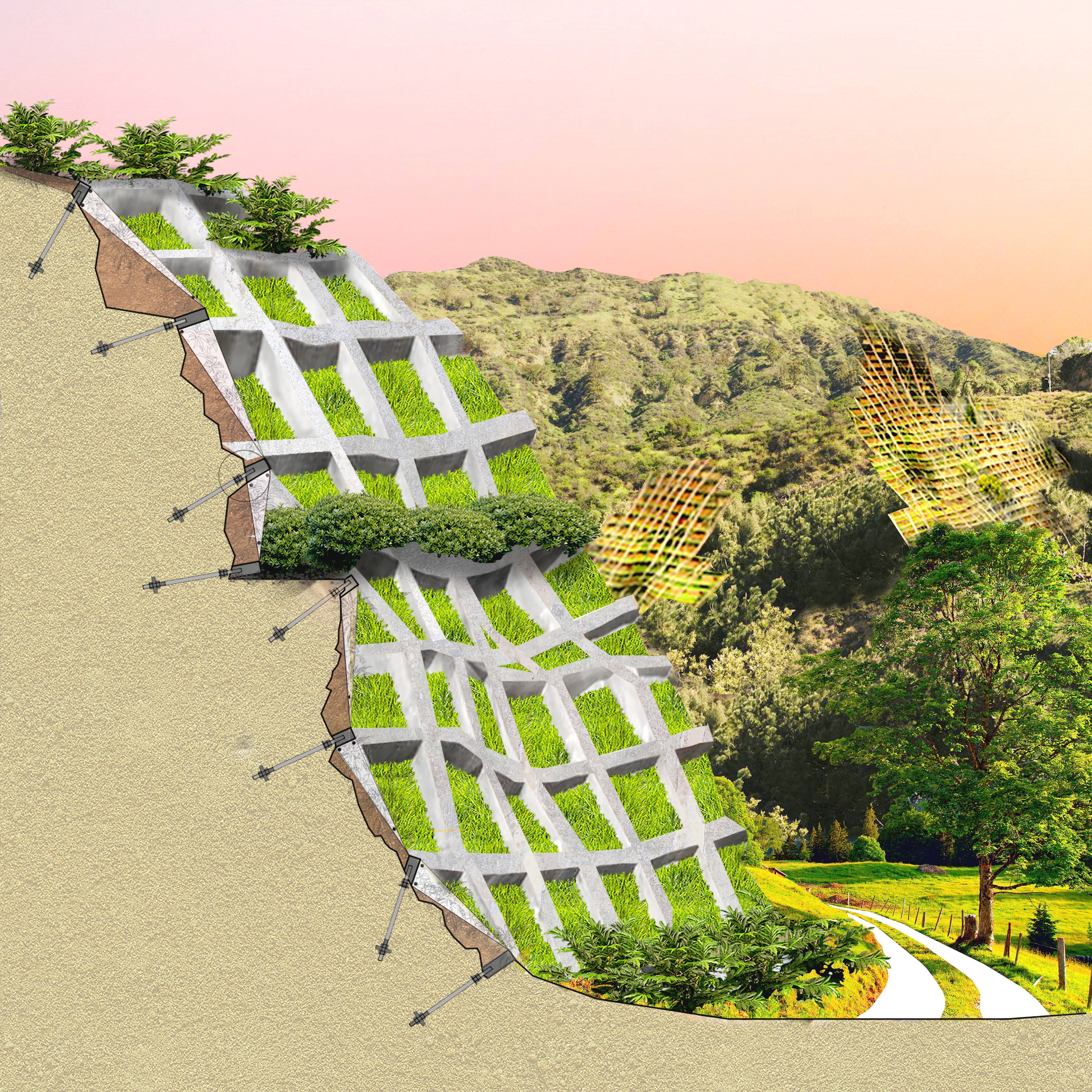
Shotcrete grid

"Fingers" - Conceptual graphic
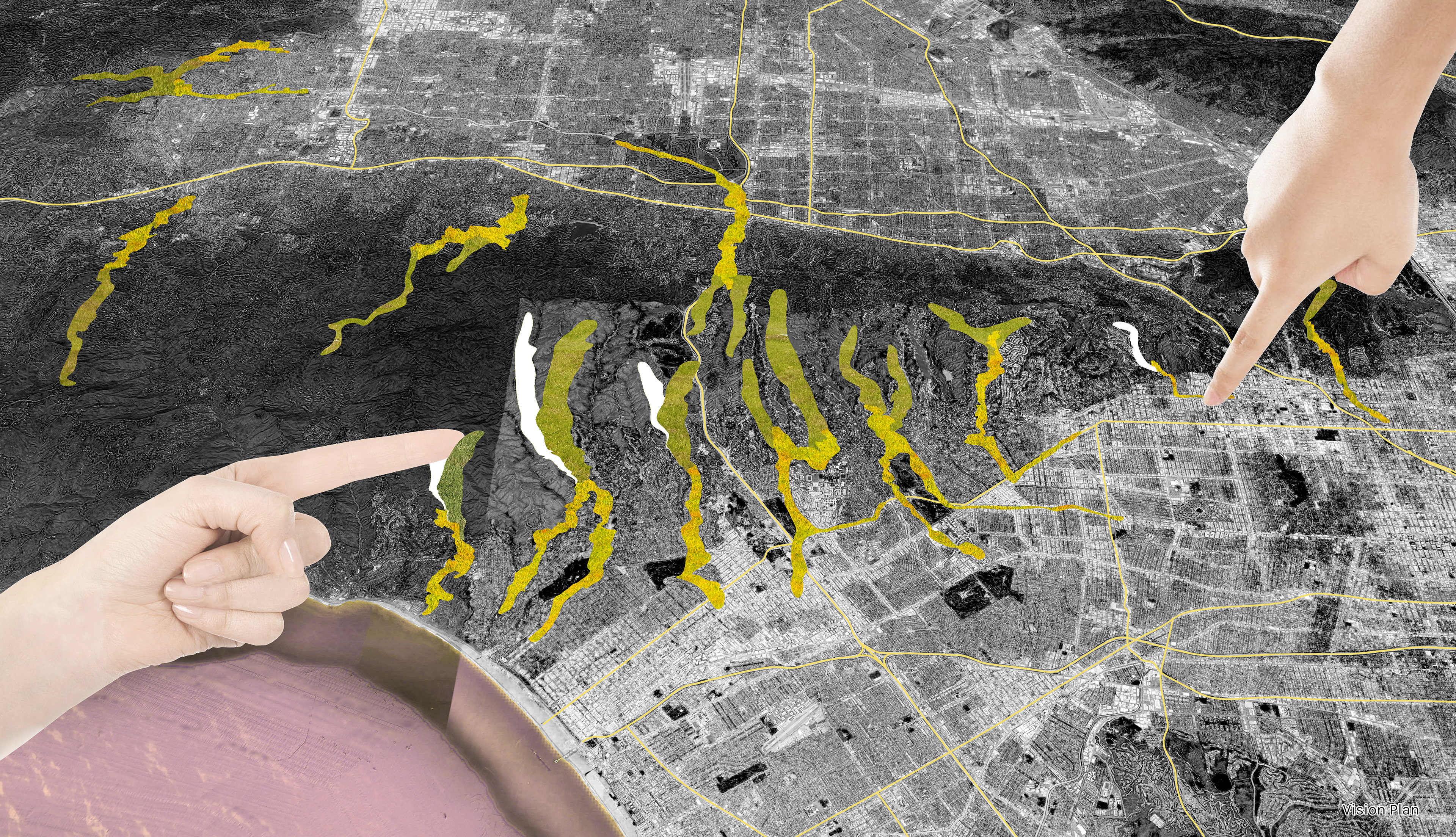
Regraded slopes and fingers - Masterplan

Rammed earth architecture - Masterplan
The Third Mountain project looks at these landforms at their most basic – contours. It explores how to modify these slopes using the existing grading technology to create a safe and harmonious Urban-Nature interface. The new landscape is created by cut and fill, taking land from canyons that have been identified to pose the most threat, and extending the excavated earth as fingers into urban areas.
A shotcrete grid is used to stabilize the modified slope. The stabilized slopes are planted with fire-resistant landscaping. This also forms the base for a new vertical landscape system in the mountains. The regraded land from the slopes creates "fingers" using the existing city grid as a template to find its way into the flatlands. They permeate through the city to find locations to create new programmatic and landscaped conditions. The earth that is brought down from the mountains is used to create sustainable rammed earth architecture, strategically placed in between the existing grid to create a new master plan.
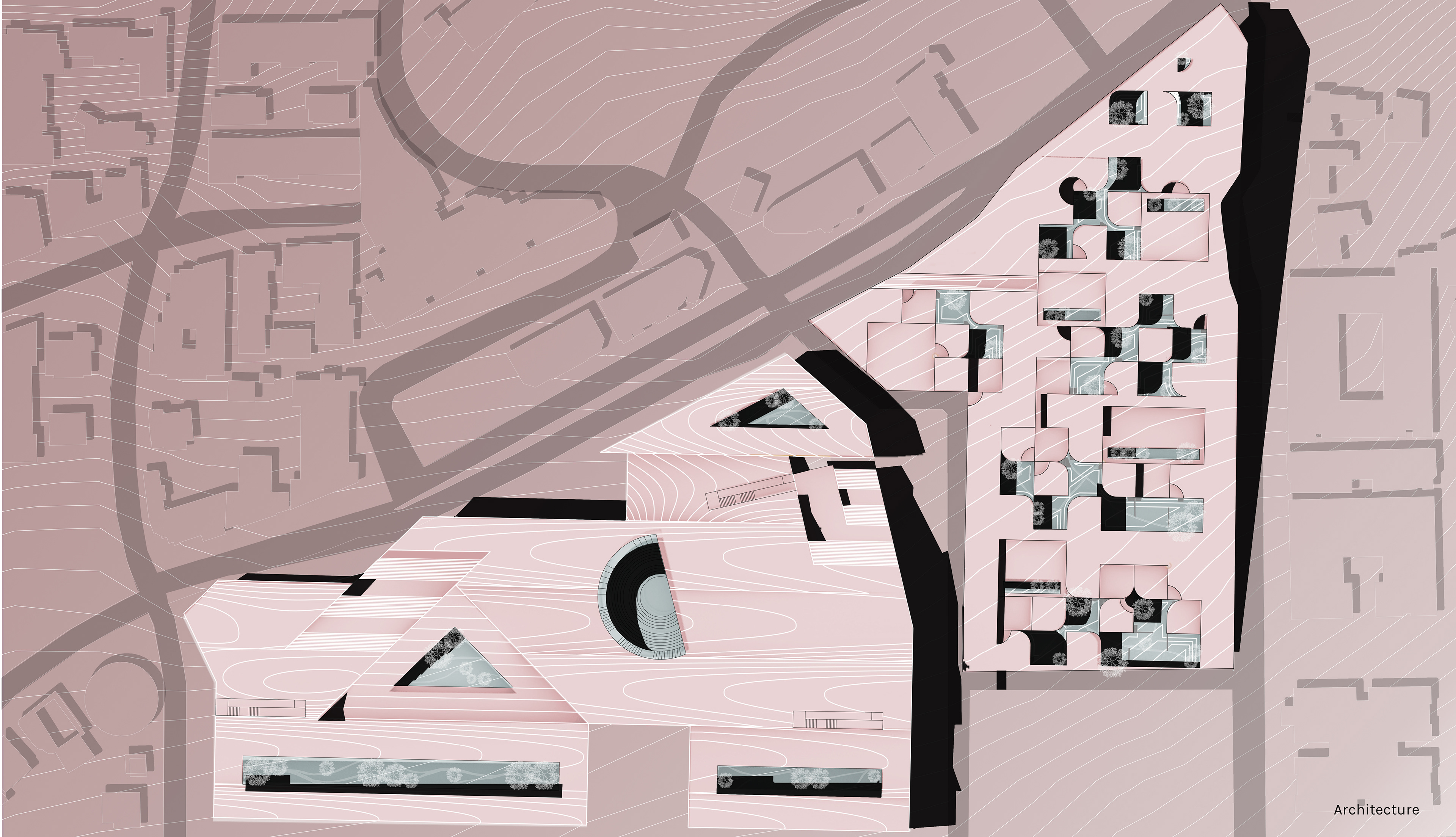
Rammed earth - Proposal
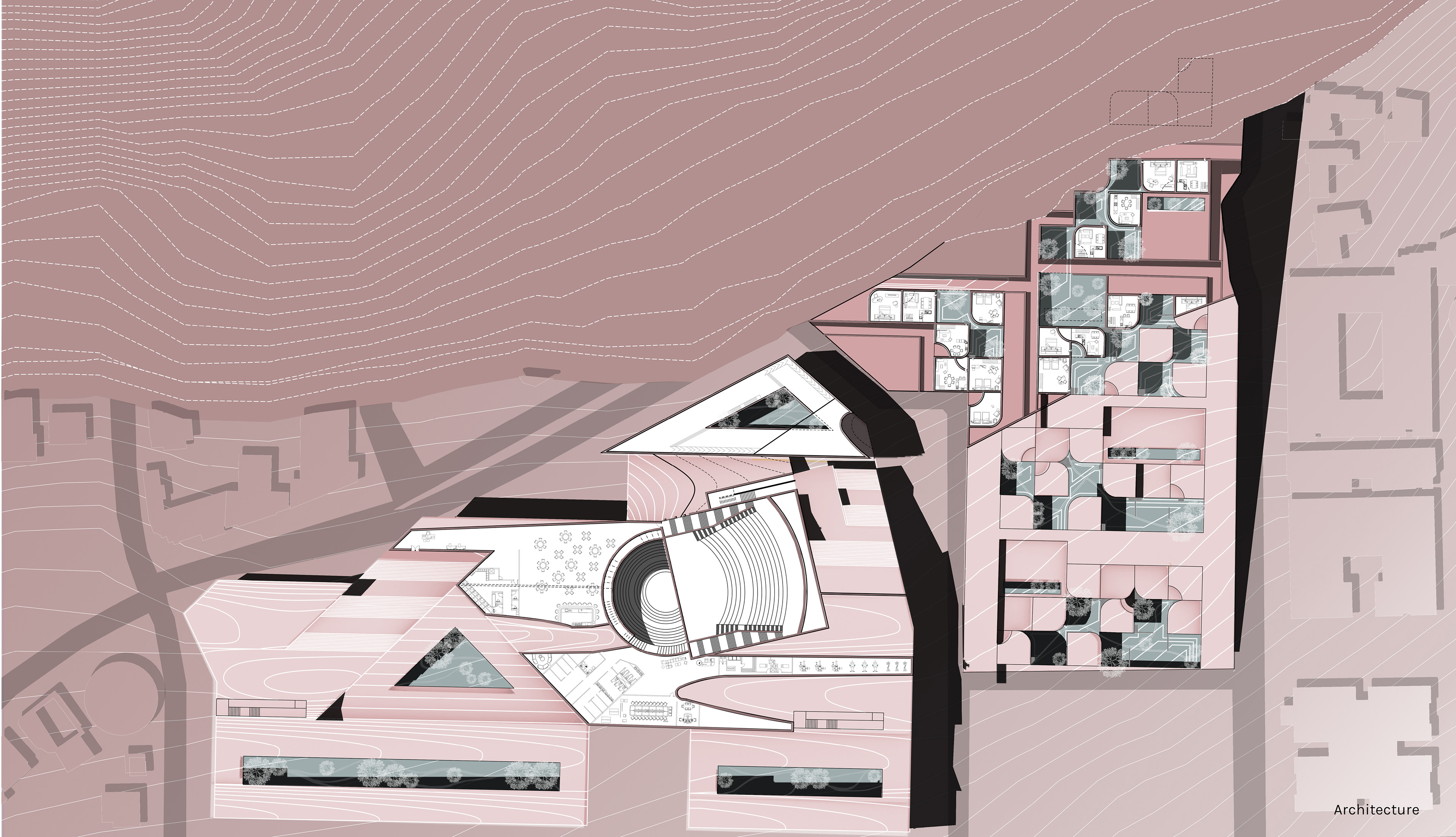
Rammed earth - Proposal
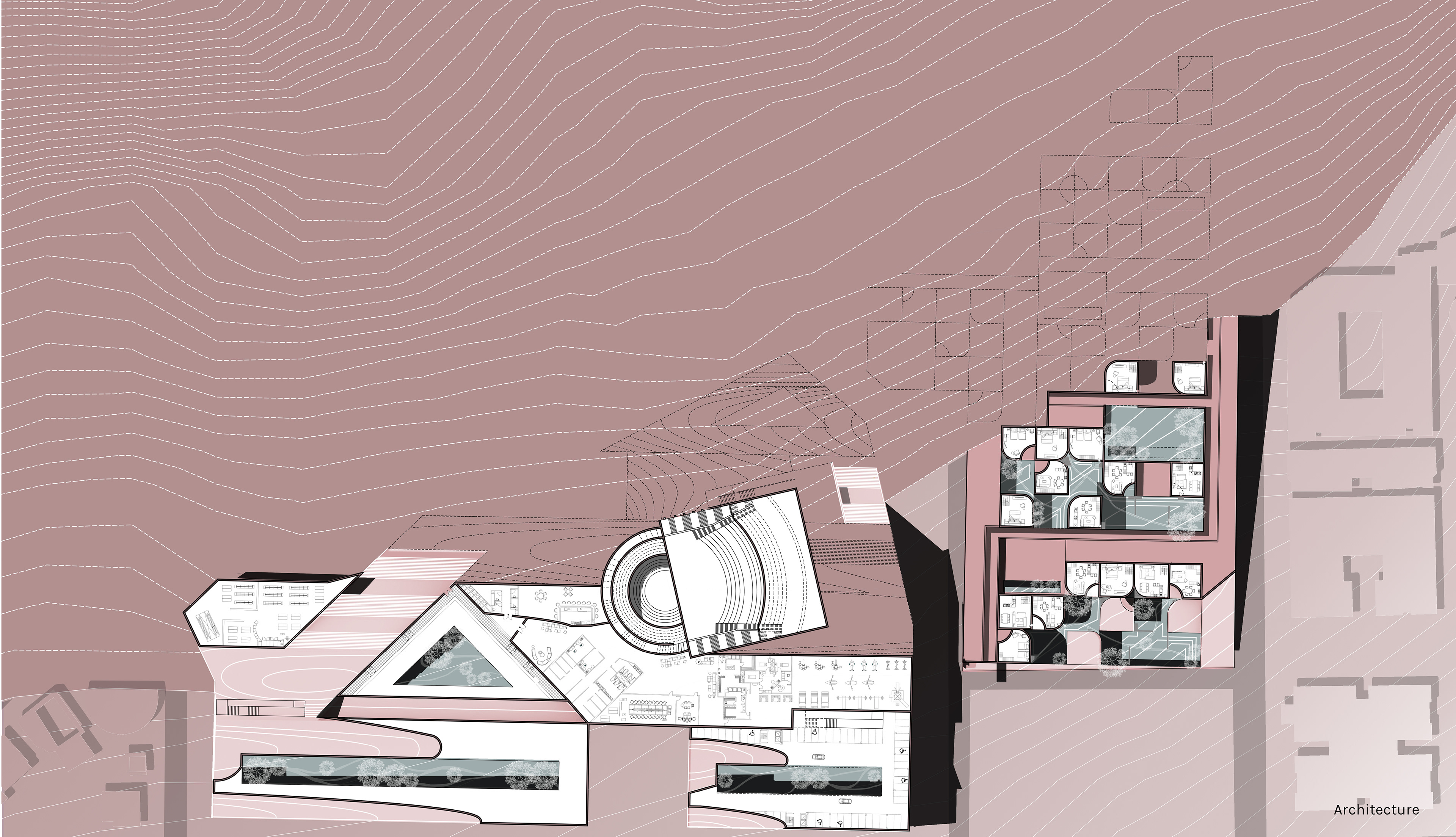
Rammed earth - Proposal

Proposal - Residential

Proposal - Residential

Proposal - Radical Landscape
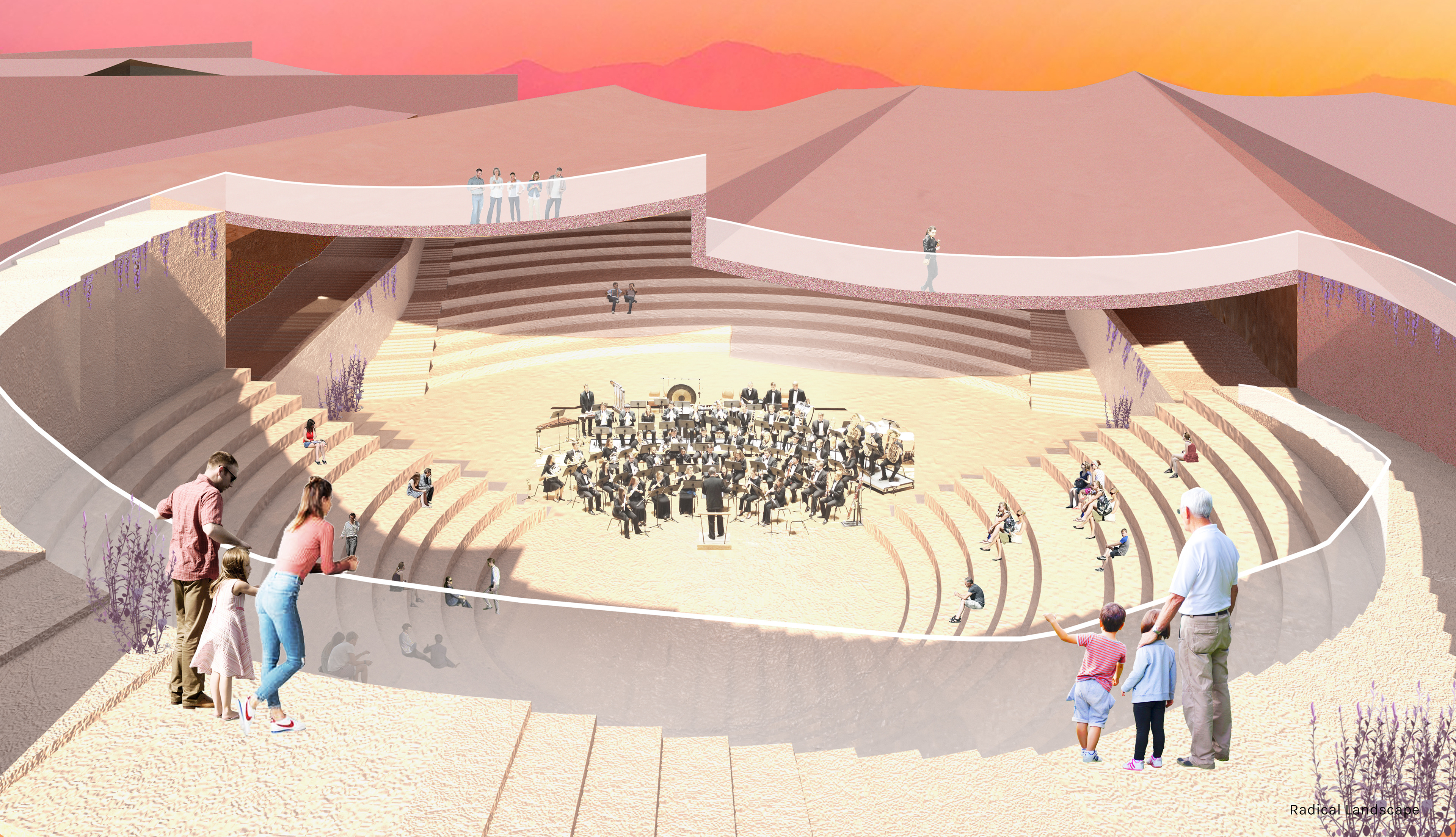
Proposal - Radical Landscape
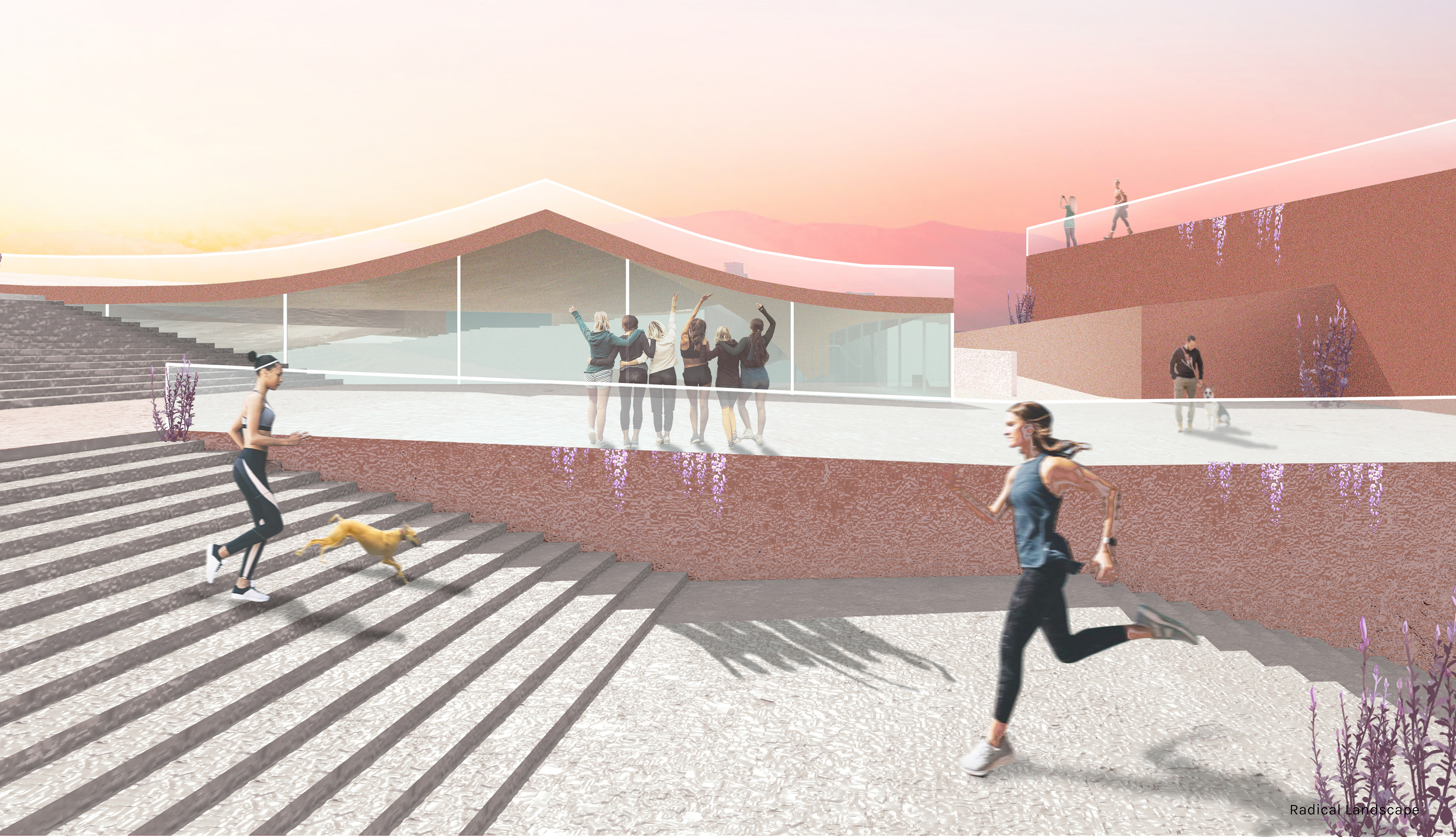
Proposal - Radical Landscape
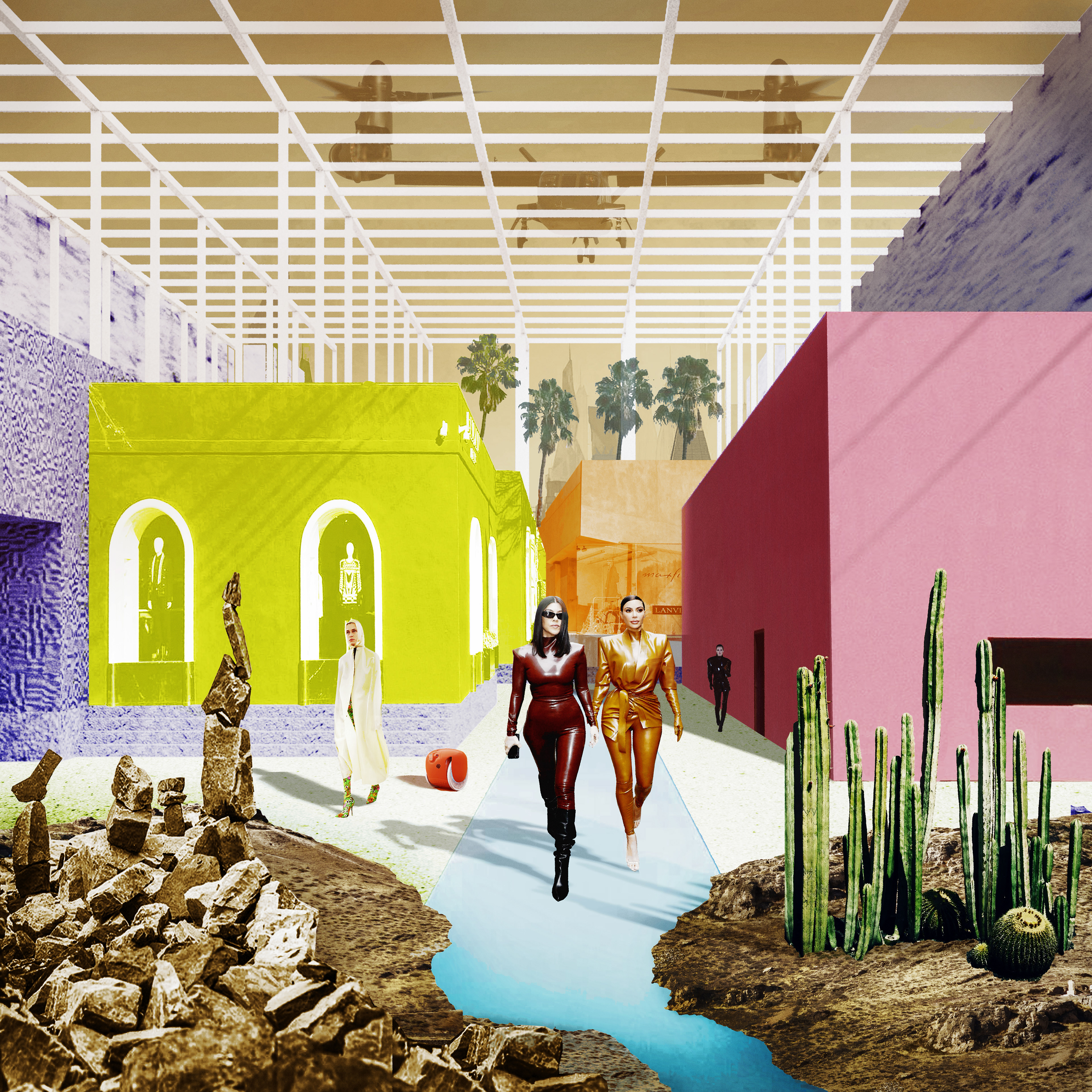
A new lifestyle
With wildfires and pandemics becoming the new normal, life has begun to transition indoors already. In 2050, the air quality will be much worse, and the outdoors won’t be the ideal place to enjoy the city. The city has transformed. A new story of living indoors in artificial nature begins here. Within the master-plan grid, functional enclosed spaces are arranged around courtyards of different sizes. A combination of underground and open-to-sky areas creates a new experience for interacting with nature in 2050. The spaces created give the impression of being dug into the landscape.
This new third mountain manifests itself on earth as the new materiality, as the construction material and landscape element. Connections with nature are no longer immersing oneself in seamless panoramic mountain views but within carefully constructed interior landscaped. The first mountain has found itself transported and transformed for an indoor life in 2050 LA, rising to the challenge of new-age climate threats and social and lifestyle changes.